Nun, Scientist, Artist, Saint: Meet Hildegard von Bingen
Saint Hildegard von Bingen (1098-1179), also known as the Sybil of the Rhine, is one of the most renowned figures from the European Middle Ages. She...
Iolanda Munck 18 July 2024
Although most artwork is difficult to attribute to an artist in the medieval period, here are five medieval artists you should know. In this article, you will learn about a painter, an illustrator, a tapestry designer, a sculptor, and finally, an architect. All these five artists contributed to the medieval art movement that drastically impacted Renaissance art-making and beyond.
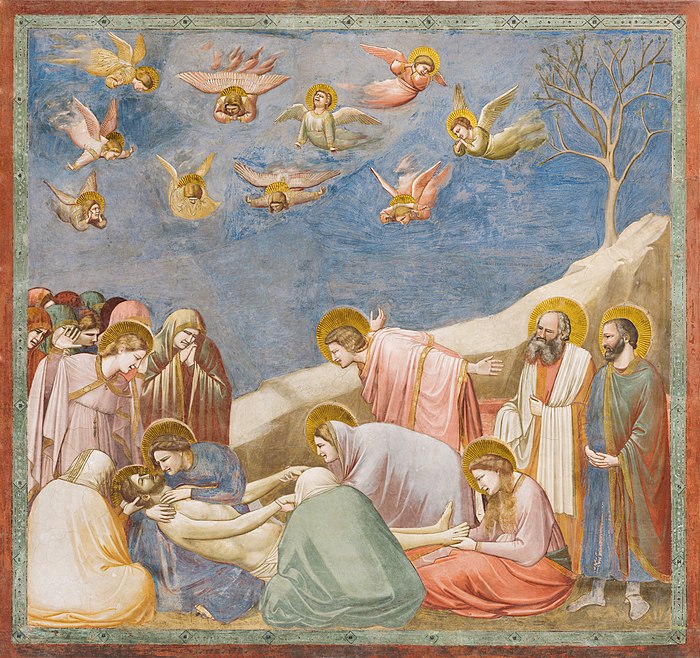
Giotto di Bondone, Lamentation (The Mourning of Christ), ca. 1304-1306, Scrovegni Chapel, Padua, Italy. Wikimedia Commons (public domain).
The most well-known Medieval artist is Giotto di Bondone, or simply “Giotto.” He is considered a Proto-Renaissance artist and an influence on early Florentine Renaissance painters with his naturalistic approach to painting. The Scrovengi Chapel, where Giotto painted a series of narratives detailing the life of Christ, best embodies his style.
In his fresco, Lamentation, Giotto depicts Christ dead in the Virgin’s arms. Sadness is conveyed in the composition, specifically through the figure’s forms and positions. We see figures standing, kneeling, and seated before Christ. It feels as if grief cascades down to Christ’s limp body. The figure’s emotions also exude from their hand gestures. At the same time, the angels in the sky echo the figures’ mourning gestures below, clearly in pain. Giotto’s overall true-to-life approach to the scene would persist among Renaissance artists.
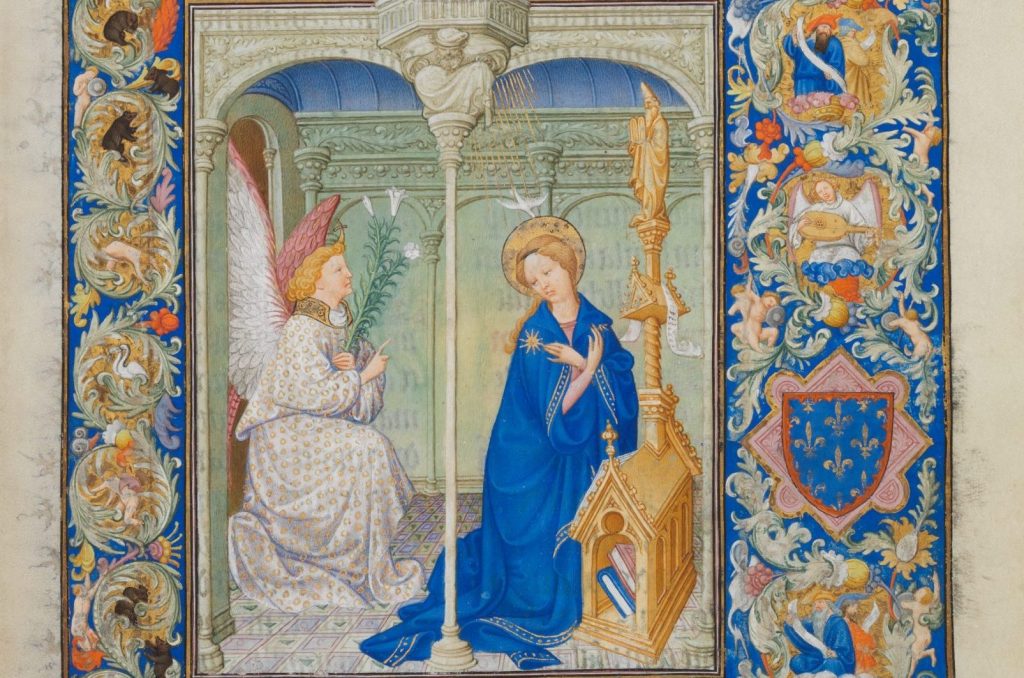
Herman, Paul, and Jean de Limbourg, The Annunciation in The Belles Heures of Jean de France, 1405–1408/1409. The Metropolitan Museum of Art, New York. Detail.
Next up is The Belles Heures of Jean de France, considered the Limbourg Brothers’ greatest work. It is a book of hours (a private devotional book) of 172 illuminations. Commissioned by Jean de France and the Duke of Berry (French: Duc de Berry), the book features Christian events that held significance for the Duke.
The Limbourg Brothers were Dutch miniature painters famous for their medieval illuminated manuscripts. The brothers’ first commission was so successful that the Duke requested another, the Très Riches Heures du Duc de Berry. This book of hours is the most valuable globally due to its influence on later art. The use of a dazzling color palette as an artistic device informed and foreshadowed the style of Northern Renaissance painters such as Jan van Eyck.
Created between 1405 and 1408 or 1409, probably in Paris, The Belles Heures, or Beautiful Hours, a private devotional book, is one of the most sumptuous manuscripts to have come down to us from the Middle Ages.
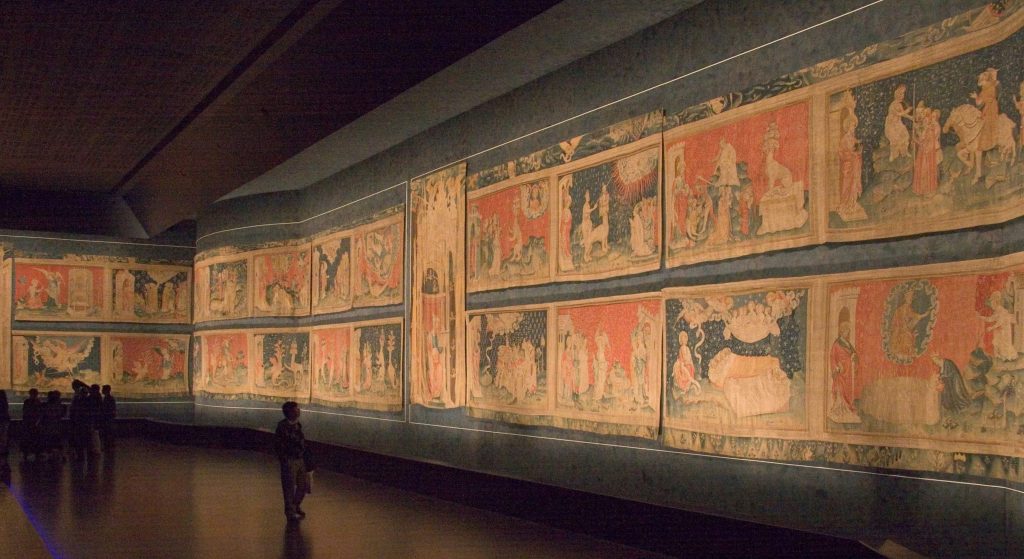
Jean Bondol (designer) and Nicholas Bataille (weaver), The Apocalypse Tapestry, 1377-1382, Musée de la Tapisserie, Angers, France. Photo by Kimon Berlin via Wikimedia Commons (CC BY-SA 3.0).
Paintings and manuscripts were popular during the Middle Ages, and so were tapestries. One notable example was from around 1373, when Louis I, the Duke of Anjou, commissioned Flemish artist Jean Bondol, then the court artist for Charles V of France, to design the Apocalypse Tapestry.
Bondol took inspiration from the illuminated manuscript Apocalypse at the Royal Library, which shows the story from the Book of Revelation by Saint John the Divine. He chose this motif probably because, at the time, the Apocalypse was a widely acclaimed moral story about good and evil. At the end of the story is an uplifting message, a theme Louis I needed for the Valois family (since they were currently fighting in the Hundred Years’ War).
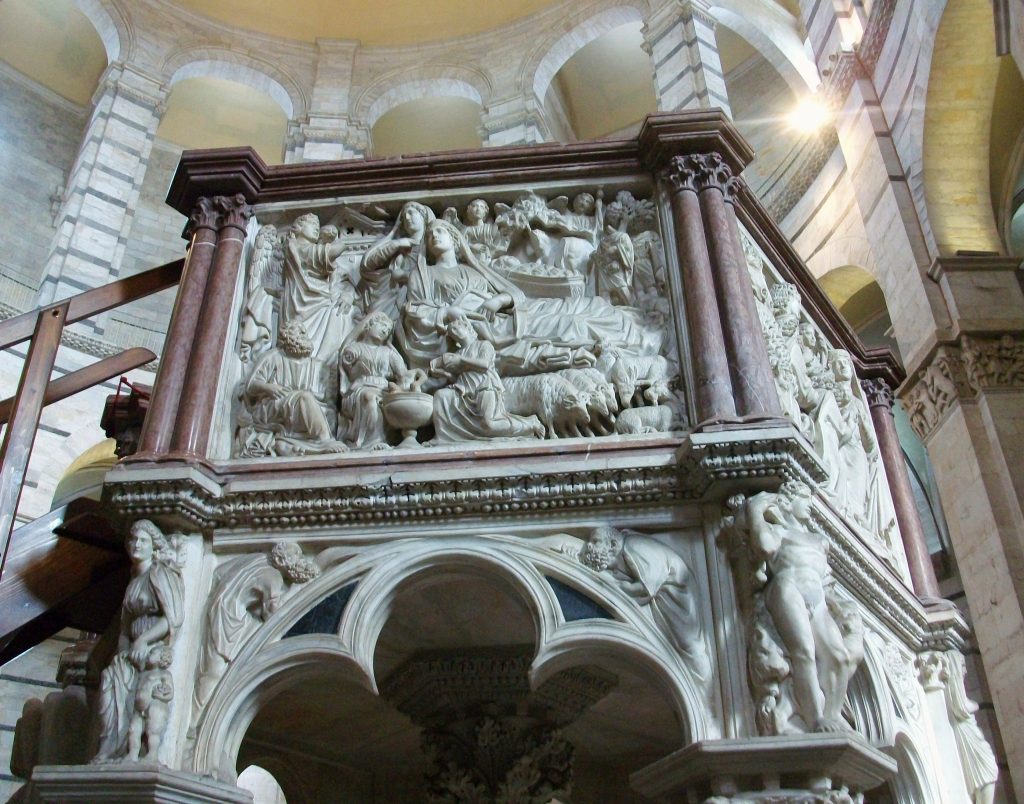
Nicola Pisano, Annunciation, Nativity, Annunciation to the Shepherds, 1255- 1260, Detail of the marble pulpit, Baptiserty, Pisa, Italy. Photo by Joanbanjo via Wikimedia Commons (CC BY-SA 3.0).
We must also discuss a crucial sculptor in Medieval art: Nicola Pisano, a Pisa-based Italian sculptor active during the middle of the 13th century and best known for his classical Roman sculptural style.
In 1255, he was commissioned the pulpit in the Baptistery of Pisa. This piece, often considered one of his masterpieces, combined French Gothic with the classical Roman style—Even Vasari mentioned Pisano’s studies on ancient Roman sculptures as his main source of inspiration. It depicts a biblical story from Luke, chapter 2, where an angel announces the birth of Jesus; it also alludes to the nativity scene. Such multidimensional narratives shape a powerful message marvelously carved in stone.
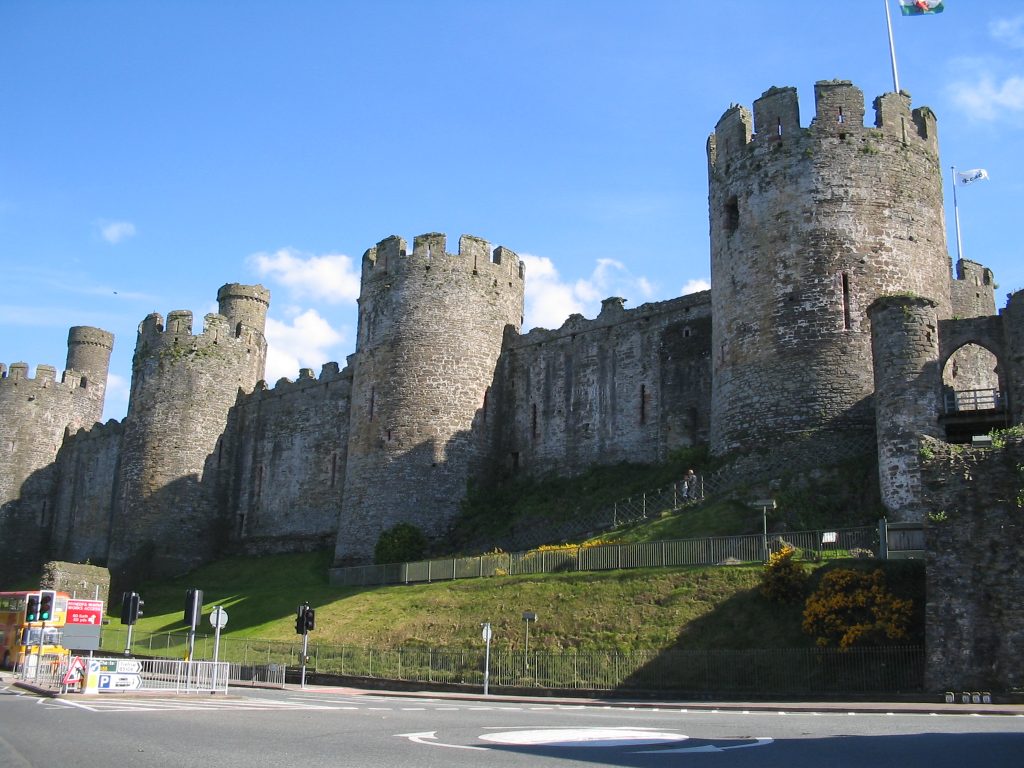
Master James of Saint George, Conwy Castle, 1283- 1287, North Wales, United Kingdom. Photo by David Benbennick via Wikimedia Commons (CC BY-SA 3.0).
Lastly, Master James of Saint George always earned the title of the most famous architect from the Middle Ages as the lead architect of several King Edward I of England castles: Conwy, Harlech, Caernarfon, and Beaumaris, all located in North Wales.
The image above is of Conwy Castle, built between 1283 and 1287 during Edward I’s conquest of Wales. The massive defensive walls there were programmed to withhold a siege. Master James created the castle using Limestone and Sandstone and made it sit on a rocky coast, where it was expected to be sturdy enough to last centuries. Indeed, Conwy Castle managed to withstand the English Civil War in 1642, over 300 years after its construction.
Today, UNESCO claims Conwy Castle to be “the finest examples of late 13th-century and early 14th-century military architecture in Europe.”
Henry Luttikhuizen and Dorothy Verkerk. Snyders Medieval Art, Prentice Hall, 2006.
Timothy B. Husband, The Art of Illumination: The Limbourg Brothers and the Belles Heures of Jean de France, Duc de Berry, The Metropolitan Museum of Art/Yale University Press, 2008.
DailyArt Magazine needs your support. Every contribution, however big or small, is very valuable for our future. Thanks to it, we will be able to sustain and grow the Magazine. Thank you for your help!